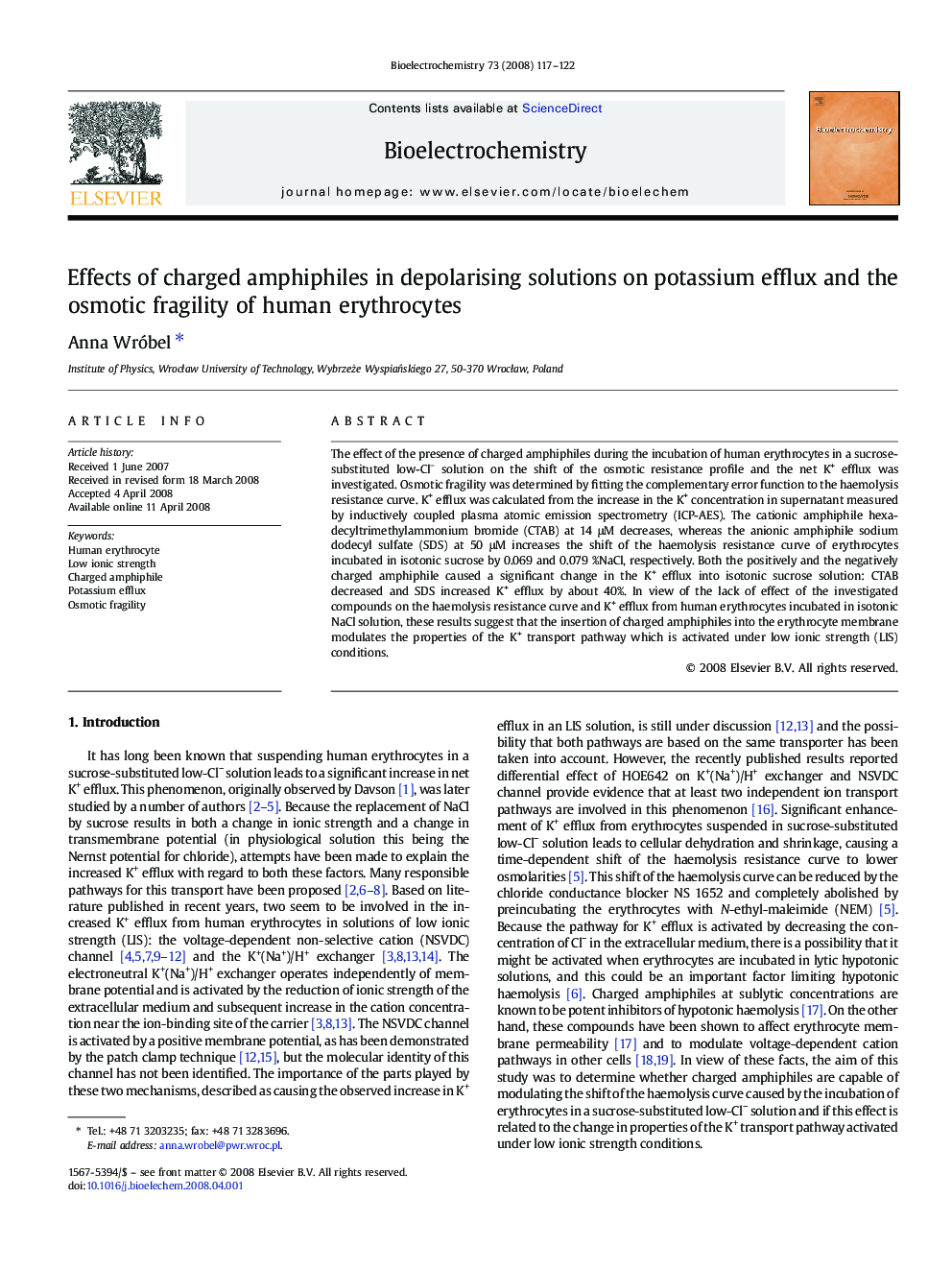| Article ID | Journal | Published Year | Pages | File Type |
|---|---|---|---|---|
| 1268814 | Bioelectrochemistry | 2008 | 6 Pages |
The effect of the presence of charged amphiphiles during the incubation of human erythrocytes in a sucrose-substituted low-Cl− solution on the shift of the osmotic resistance profile and the net K+ efflux was investigated. Osmotic fragility was determined by fitting the complementary error function to the haemolysis resistance curve. K+ efflux was calculated from the increase in the K+ concentration in supernatant measured by inductively coupled plasma atomic emission spectrometry (ICP-AES). The cationic amphiphile hexadecyltrimethylammonium bromide (CTAB) at 14 μM decreases, whereas the anionic amphiphile sodium dodecyl sulfate (SDS) at 50 μM increases the shift of the haemolysis resistance curve of erythrocytes incubated in isotonic sucrose by 0.069 and 0.079 %NaCl, respectively. Both the positively and the negatively charged amphiphile caused a significant change in the K+ efflux into isotonic sucrose solution: CTAB decreased and SDS increased K+ efflux by about 40%. In view of the lack of effect of the investigated compounds on the haemolysis resistance curve and K+ efflux from human erythrocytes incubated in isotonic NaCl solution, these results suggest that the insertion of charged amphiphiles into the erythrocyte membrane modulates the properties of the K+ transport pathway which is activated under low ionic strength (LIS) conditions.
